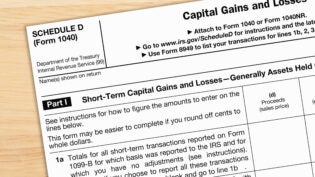
When people think about October, they usually think about the barrage of beasts, ghosts, and witches that invade city streets and delight passersby with colorful promises of delicious tricks and treats. But for small business owners, the month can be more macabre than merry thanks to complex and time-consuming payroll-tax forms (such as Form 941) that need to be filed by Halloween for their Q3 payrolls.
What is Form 941?
Federal tax Form 941, Employer’s Quarterly Federal Tax Return, is the federal form employers use to report income taxes, social security tax, or Medicare tax withheld from employee’s paychecks. The form also is used to report the employer’s portion of social security or Medicare tax employee wages, payroll taxes and information the IRS deems important.
In general, if you pay employees (even yourself as an employee) then you will be required to use this form to report information the IRS.
Tip 1: When to e-File?
Small businesses with employees must file Form 941, Employer’s Quarterly Federal Tax Return, to the IRS every three months. However, taxpayers cannot e-file for a particular period before the IRS opens the relevant e-file window, which begins the day after the end of the relevant payroll quarter end. Accordingly, the e-file payroll windows are:
- First quarter: April 1 to April 30th
- Second quarter: July 1 to July 31st
- Third quarter: October 1 to October 31st
- Fourth quarter: January 1 to January 31st
However, if all taxes have been paid in full, the return due date is extended by ten days from the quarter end date:
- First quarter ending March 31st is due April 30th, May 10th = extended due date
- Second quarter ending June 30th is due July 31st, August 10th = extended due date
- Third quarter ending September 30th is due October 31st, November 10th = extended due date
- Fourth quarter ending December 31st is due January 31st, February 10th = extended due date
If a small business misses the above deadlines for timely filing, the business should e-file as soon as possible to reduce penalties. There is no need to wait for a new window.
Tip 2: Paying Taxes versus Filing a Payroll Tax Return.
The IRS considers depositing taxes and filing payroll tax returns (e.g., form 941) two completely separate processes. Don’t confuse the two. Payroll taxes are typically paid either monthly or semi-weekly, depending on the amount of employment taxes paid by the employer the previous year. The IRS requires taxpayers to deposit all depository taxes electronically by electronic funds transfer (EFT), unless the taxpayer qualifies for a de minimis exception. The de minimis exception applies if Form 941, line 12 is less than $2,500 or line 12 was less than $2,500, and the taxpayer didn’t incur a $100,000 next-day deposit obligation during the quarter.
When a return is filed by paper, any de minimis balance due can be paid with the return by including a check. When e-filed, the taxpayers must pay electronically.
To pay the tax, Small Businesses can use the IRS Electronic Federal Tax Payment System (EFTPS® is a system for paying federal taxes electronically and is offered free by the U.S. Department of Treasury), or they can use a third-party service provider.
Here’s a link to the IRS EFTPS system (which requires the use of an IRS-issued PIN):
Here’s a link to pay your balance due taxes by credit card:
https://www.irs.gov/payments/pay-taxes-by-credit-or-debit-card
Separately, absent an exception, small business owners need to file a payroll tax return form 941 quarterly regardless of whether they appropriately paid the IRS. Form 941 is a summary of what you’ve already paid in payroll taxes and must be submitted quarterly. Its filing dates, however, are the same for everyone—and differ from deposit dates.
Tip 3: What IRS PIN Numbers are Required?
The IRS has two different PIN numbers that are relevant to e-filing and electronic payments: 1) The IRS PIN required to pay taxes using the EFTPS system, and 2) the IRS 10-Digit PIN used to e-file form 941 (and other form 94x forms such as form 940).
Currently, while taxpayers still need an EFTPS Deposit PIN to pay taxes, they can now e-file without their own 94X PIN. Historically, a key problem to e-filing was the need for small businesses to obtain their own IRS-issued PINs, which the IRS delivers by US Post (and can take up to 45 days so companies who wanted to e-file really had to plan ahead). Moreover, third parties, such as attorneys, CPAs, tax return preparers or other tax professionals cannot request a PIN on behalf of the business.
Tip 4: Who Can Sign an e-Filed Return?
The following persons are authorized to sign the return for each type of business:
- Sole proprietorship—The individual who owns the business.
- Corporation (including a limited liability company (LLC) treated as a corporation)—The president, vice president, or other principal officer duly authorized to sign.
- Partnership (including an LLC treated as a partnership) or unincorporated organization—A responsible and duly authorized partner, member, or officer having knowledge of its affairs.
- Single-member LLC treated as a disregarded entity for federal income tax purposes—The owner of the LLC or a principal officer duly authorized to sign.
- Trust or estate—The fiduciary.
- Power of Attorney—Form 941 may be signed by a duly authorized agent of the taxpayer if a valid power of attorney has been filed.
- Reporting Agent— A reporting agent is a specific type of relationship between the company and the reporting agent and authorizes the reporting agent to submit tax returns, make tax deposits, etc., on the company’s behalf by filing form 8655 with the IRS and complying with Revenue Procedure (Rev. Proc.) 2012-32.
- If the reporting agent is not providing legal advice (e.g., advising the client on determining whether its workers are employees or independent contractors for federal tax purposes), the reporting agent should NOT complete “Third-Party Preparer” information, including entering a Preparer Tax Identification Number (PTIN).
- Reporting agents should sign payroll tax returns using their own name, not the name of their client.
Tip 5: Amended Returns and e-Filing.
If a small business made a mistake on Form 941, unfortunately, the small business cannot just e-file a new version to correct the return. The IRS will reject the subsequent submission. Rather, the small business will need to file an amended return Form 941X by paper as the IRS does not accept electronic versions of amended 941 returns.
Tip 6: When to Stop Filing Form 941.
Unless an exception applies, small businesses must continue to file (or e-file) form 941 every quarter after the initial filing even if they have no employees during some of the quarters, and even if they have no taxes to report. They file until the business has closed AND the small business has communicated this to the IRS by selecting form 941, line 17 and entering the final date wages were paid.
There are certain limited exceptions:
- Household Employees. Taxpayers who have household employees like maids or housekeepers, report this information on Form 1040, schedule H, rather than reporting the information on form 941.
- Small Taxpayers. Certain employers whose annual payroll tax and withholding liabilities are less than $1,000 may get approval to file the annual version – Form 944).
- Seasonal Employers. If a taxpayer hires people seasonally, the taxpayer only needs to complete Form 941 for the quarters they worked there (partial or complete). To tell the IRS a taxpayer won’t file a return each quarter, form 941, line 18 should be checked every quarter.
- Farm Employers. Taxpayers with farm employees for agricultural labor use Form 943 instead of 941, because they have their own special rules for taxes that are different than the normal rules for taxes and withholding.
Tip 7: Rejected Returns.
If the IRS rejects a small business’s e-filed return, the IRS employs a 10-day lookback rule that will consider the return filed on the original submission date if all issues are corrected within 10 calendar days. The date is not extended regardless of weekends, holidays or the end of the year cutoff. If the taxpayer does not correct the return within this 10-day window, the small business will need to re-submit an entirely new return and that return will not relate back to the original submission date.
Tip 8: E-filing Time Stamp Rules.
Under an IRS “Mailbox Rule” for e-filing, an e-filed return is timely filed when the Electronic Return Originator (ERO) gives a small business the electronic postmark, even if the ERO/transmitter doesn’t transmit such information to the IRS until later (i.e., even after midnight on a quarter-end date). In addition, the small business’s timezone controls so that someone from California is timely filed even if the ERO time stamps it after midnight (but it’s before midnight in California).
4679 Views












